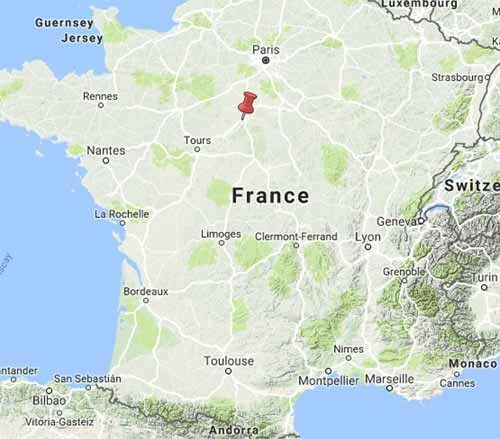
The Canal d’Orléans is one of the oldest canals in France, completed in 1692, only a decade after the Canal du Midi, although fifty years after the very first, the Canal de Briare. Its original purpose was the floating of logs (“le flottage”) from Orléans on the Loire to the Seine.
It connected with the Canal de Briare near Montargis and continued down the Loing river to the Seine. (Subsequently a lateral canal was built for this section also).
The Canal d’Orléans was abandoned in 1954 and the only traffic it now supports, at least on the part near Orléans, seems to be ducks.
We walked only a short way on this canal, from Chécy to Orléans – a couple of hours easy strolling. It was part of a longer walk that we did in 2006.
Getting to Chécy
There is a bus service (autocar) to Chécy from the Orléans railway station.
You can also see this map using Google Earth and take a virtual flight along our route.
Friday, 14 July 2006
Distance 11 km
Duration 2 hours 10 minutes
Ascent 15 m, descent 10 m
Map 26 of the Blue TOP100 blue series (now superseded)
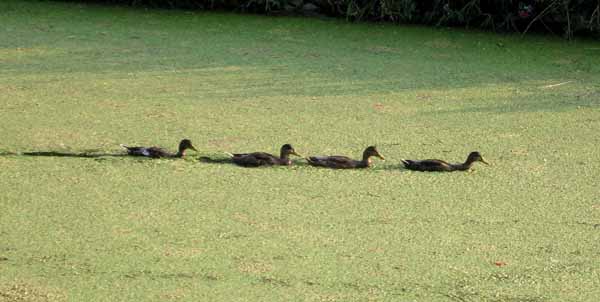
We left at 7:30 and immediately found ourselves on the tow path of the Canal d’Orléans, which differed from all the other canals we had met in that it was carpeted with thick green weed, through which ducks left trails as they paddled.
This canal, built in the seventeenth century to join Orléans with the Seine, had been abandoned in 1954, and the only traffic it now supported, apart from ducks, was pleasure craft.
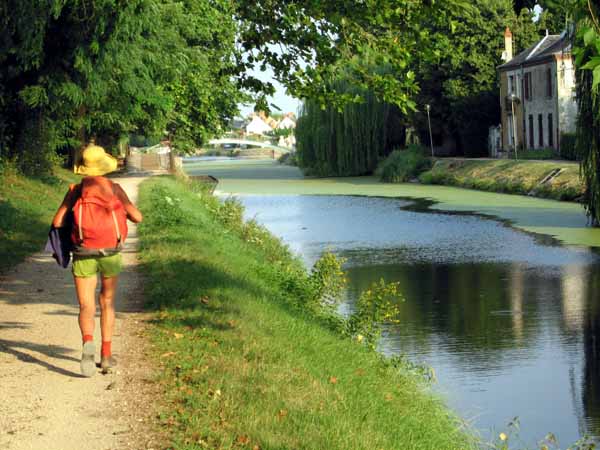
The GR stayed close to the canal all the way into Orléans. It took a surprisingly long time (2 hours) to get to the first bridge, and as we approached the centre the path filled up with joggers and cyclists.
We mistook the first spire we saw for the cathedral, which caused us to turn up into the streets earlier than we should have.
It was a run-down area, but the inhabitants must have been encouraged by the fact that most of the roads had been dug up. Improvements were evidently on the way. There were many African restaurants and cafés, all closed.
We saw people carrying bread, so we walked the way they had come, and eventually found a boulangerie, but no bar.
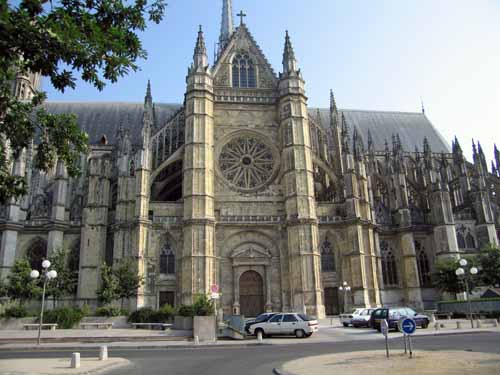
Soon afterwards we came to the actual cathedral in its huge square, with wide monumental boulevards radiating from it. The place was deserted, as it was Bastille Day, a public holiday, and apparently still too early for the tourist buses.
There were a couple of restaurants setting out their tables for lunch, but the rest of the establishments lining the main streets were offices and banks, all closed.
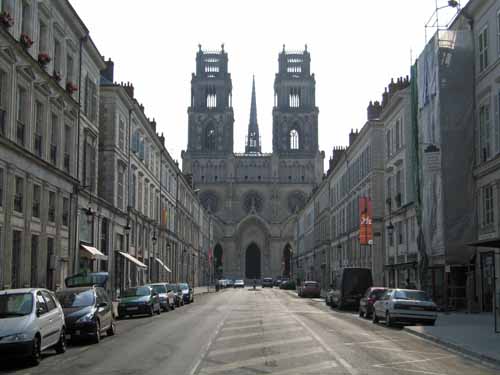
We set off towards the river again, taking to the side lanes, and before long we found a small shady square with a lovely bar, and had the pleasure of coffee and pastries under an awning.
Leaving Orléans
Orléans has a railway station. From there you can go to almost anywhere in France. Orléans also has an airport.